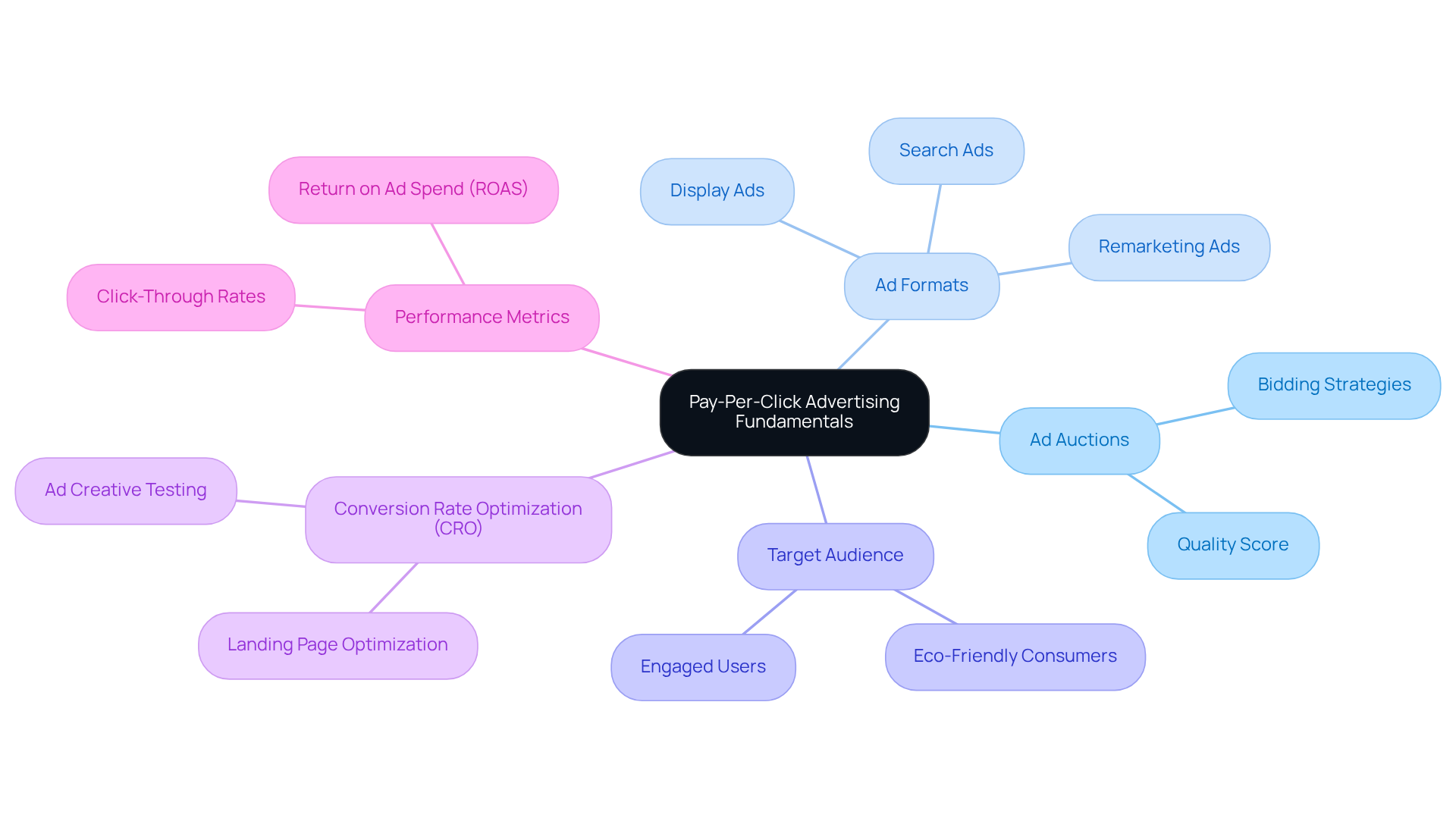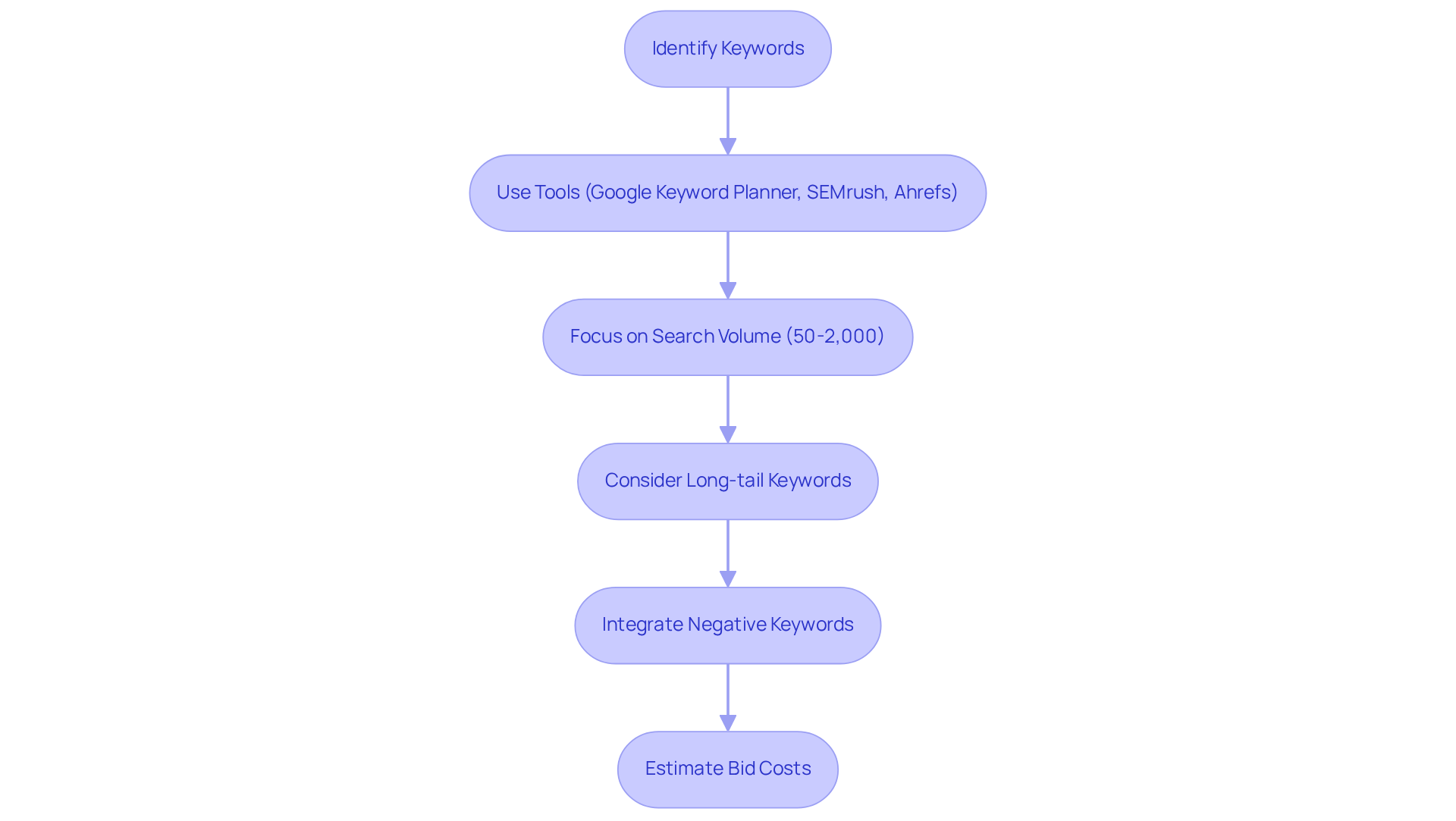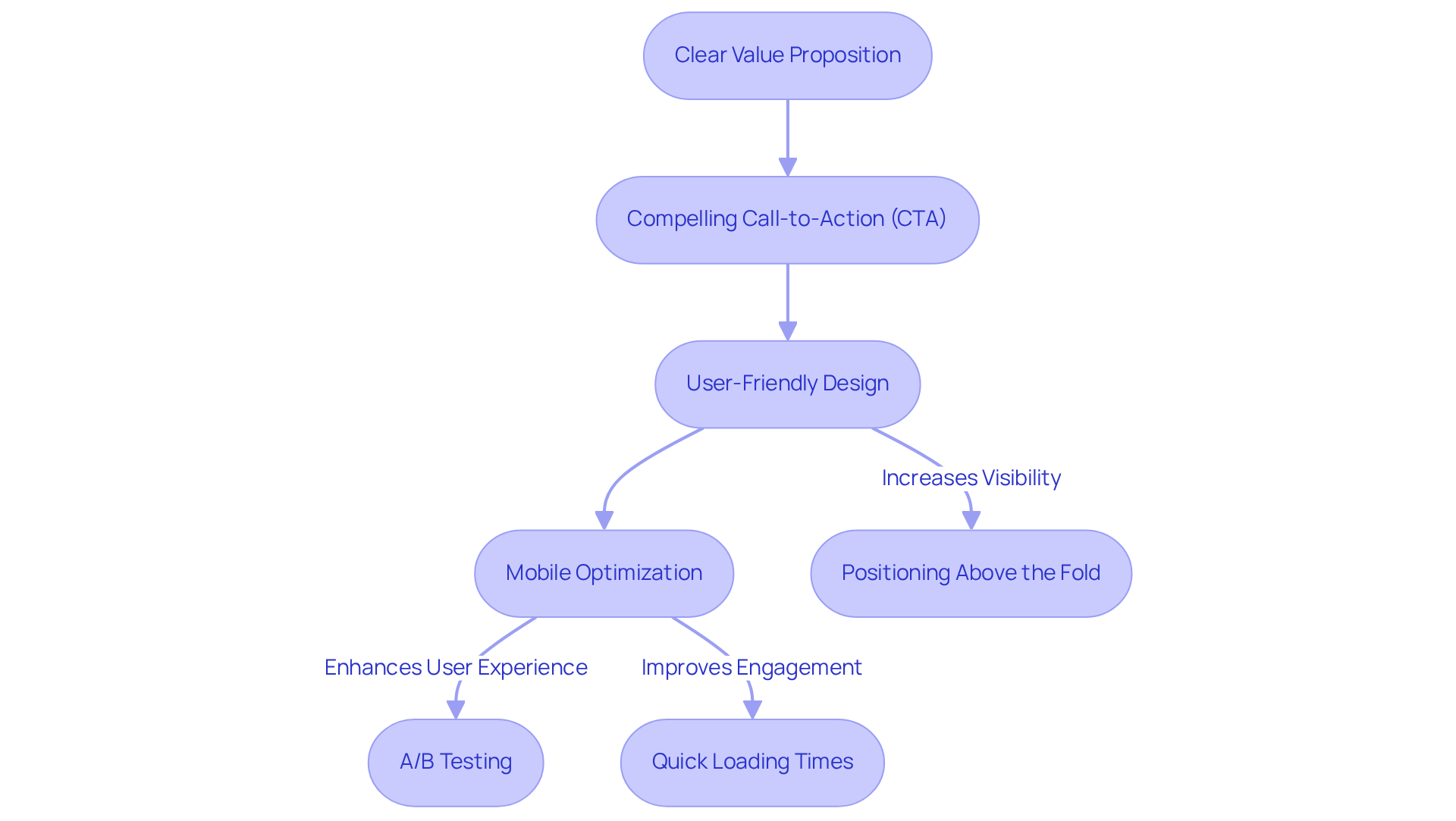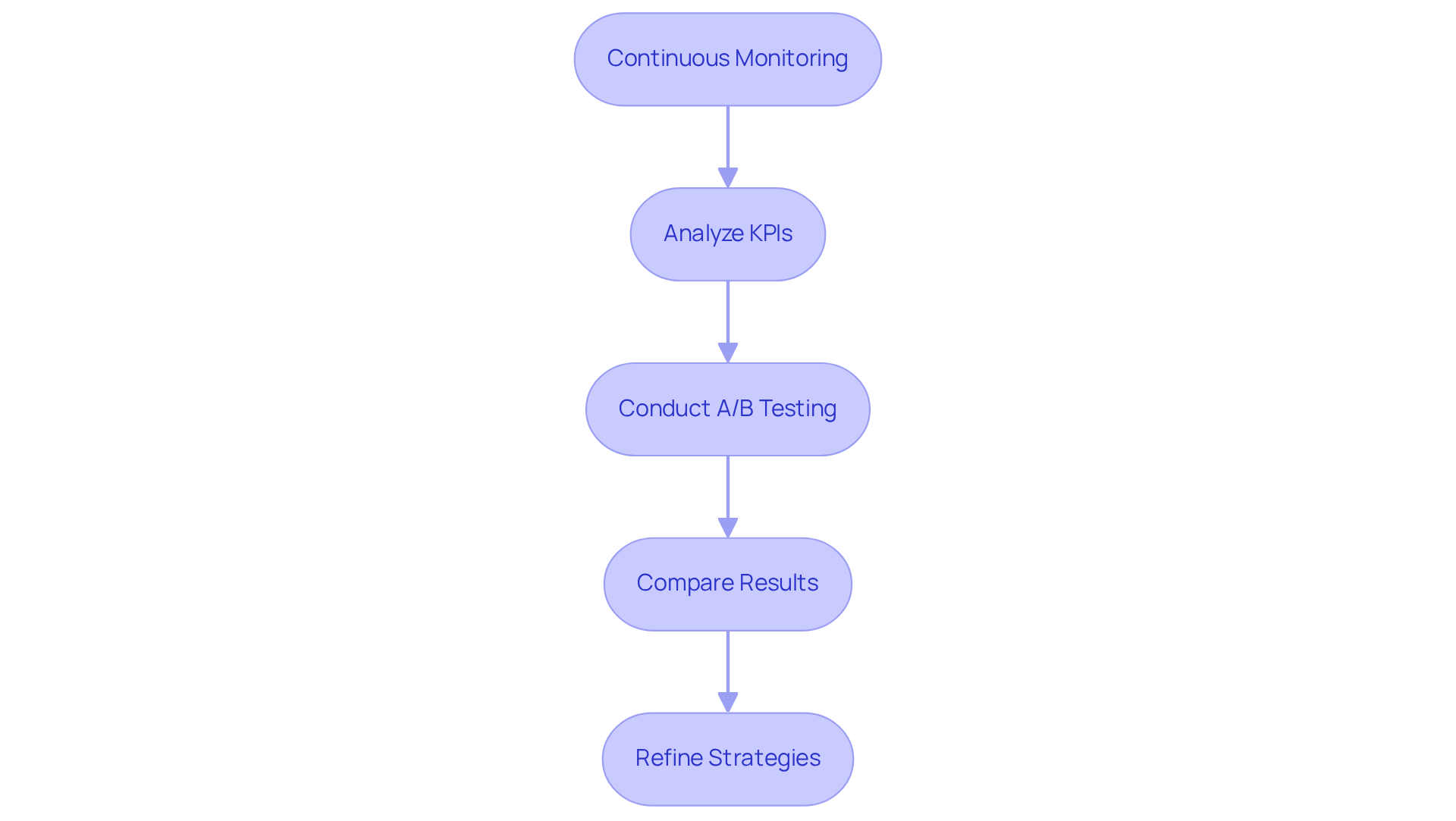
Overview
This article delineates four powerful pay-per-click (PPC) strategies designed to elevate the profitability of direct-to-consumer (DTC) brands. It emphasizes the importance of:
- Grasping PPC fundamentals
- Selecting impactful keywords
- Optimizing landing pages
- Executing continuous monitoring alongside A/B testing
Each strategy is bolstered by comprehensive insights into how mastering these elements can significantly enhance ad relevance, boost conversion rates, and optimize marketing budgets. Ultimately, these strategies serve as a catalyst for driving profitability in DTC companies.
Introduction
Pay-per-click (PPC) advertising has emerged as a cornerstone for direct-to-consumer (DTC) brands aiming to enhance their online visibility and profitability. Mastering the intricacies of PPC—ranging from selecting the right keywords to optimizing landing pages—enables brands to significantly improve their marketing outcomes. However, as the digital landscape continues to evolve, DTC companies must ensure their PPC strategies remain effective and yield a robust return on investment. This article explores four essential PPC strategies that empower brands to navigate these challenges and drive substantial profitability.
Understand Pay-Per-Click Advertising Fundamentals
Pay-per-click (PPC) advertising exemplifies an essential digital marketing model that employs pay per click strategies, where advertisers pay a fee each time their ad receives a click. This model empowers DTC companies to achieve immediate visibility across search engines and social media platforms. A thorough understanding of the key components of pay per click strategies—such as ad auctions, Quality Score, and bidding strategies—is essential for success. Brands must familiarize themselves with various ad formats, including search ads, display ads, and remarketing ads, to select the most effective approach for their target audience. By mastering these fundamentals, companies can craft effective pay per click strategies that attract visitors and generate leads.
Consider a DTC company specializing in eco-friendly products; it can leverage PPC to precisely target environmentally conscious consumers actively searching for sustainable options. By comprehending the operational dynamics of PPC, they can tailor their ads to resonate with this audience, thereby enhancing the likelihood of clicks and conversions. Furthermore, integrating a robust , such as those provided by Parah Group, can significantly amplify the effectiveness of pay per click strategies. Parah Group focuses on sustainable development and profitability, ensuring that each click translates into substantial outcomes, ultimately optimizing the return on investment for DTC companies.

Select Effective Keywords for Targeted Campaigns
Selecting effective keywords is essential for optimizing pay per click strategies in PPC campaigns. This process involves identifying the precise terms and phrases that potential customers use when searching for products or services. Tools such as , SEMrush, and Ahrefs are invaluable for uncovering high-volume, low-competition keywords that align with a company's offerings.
In industries with higher search volumes, focusing on keywords with an average monthly search volume of 50-2,000 can yield significant benefits. Long-tail keywords, which consist of more detailed phrases, generally produce higher success rates as they attract users with specific intent. For instance, rather than targeting a broad keyword like 'shoes,' a DTC company could focus on 'sustainable running shoes for women.' This targeted approach not only enhances ad relevance but also significantly increases the likelihood of successful outcomes, as the ads more closely match user intent.
Moreover, integrating negative keywords—terms that prevent ads from appearing for irrelevant searches—can further refine targeting and reduce wasted ad spend. The suggested bid estimate for the keyword 'Clothing store' stands at $1.72, offering insights into the cost implications of targeting specific keywords. Additionally, considering that Google Ads boasts 10 million users, leveraging Google Keyword Planner can enhance both credibility and effectiveness in keyword selection.
By refining their pay per click strategies in this manner, brands can maximize PPC effectiveness and drive more profitable outcomes.

Optimize Landing Pages for Higher Conversion Rates
A well-optimized landing page is crucial for converting visitors into customers. To achieve this, it must feature:
Alignment with the ad's messaging is essential to maintain consistency and meet user expectations. For instance, if a PPC ad highlights a 20% discount on eco-friendly products, the landing page should prominently display this offer while facilitating easy navigation to the relevant products.
Mobile optimization is particularly vital, given that over half of PPC traffic comes from mobile devices. Quick loading times, user-friendly designs, and easily clickable buttons significantly enhance user experience and improve success metrics. Research indicates that customized landing pages can boost success metrics by as much as 30%. This underscores the importance of various components—such as headlines, images, and CTAs—to identify what resonates most with the audience.
Incorporating expert insights, UX/UI professionals assert that a streamlined design minimizes distractions, allowing visitors to concentrate on the desired action. Key elements, including contact forms, headlines, and logos, should be positioned above the fold to ensure visibility. Additionally, high-quality visuals and clear messaging can further engage users, ultimately leading to higher conversion rates. By implementing these pay per click strategies, DTC companies can effectively enhance their PPC campaigns and drive profitability.

Implement Continuous Monitoring and A/B Testing for Improvement
To maximize the effectiveness of pay per click strategies, companies must prioritize continuous monitoring and A/B testing. Regular analysis of key performance indicators (KPIs) such as click-through rates (CTR), conversion rates, and cost per acquisition (CPA) is essential for identifying opportunities for improvement. Utilizing tools like Google Analytics and PPC platform dashboards provides critical insights into campaign performance, enabling .
A/B testing involves a systematic comparison of two versions of an ad or landing page to determine which performs better. For instance, a company may test two different headlines to evaluate which one generates more clicks. This methodical approach to testing and refining ad components empowers companies to enhance their campaigns for superior outcomes. By concentrating on metrics such as CTR and success percentages, companies can achieve significant improvements; research indicates that A/B testing can lead to higher success rates and enhanced overall campaign effectiveness.
This iterative process not only boosts performance but also ensures that marketing budgets are utilized efficiently, ultimately driving increased profitability. Successful examples from direct-to-consumer (DTC) brands illustrate that well-executed A/B testing strategies can yield substantial gains in both CTR and conversion rates, reinforcing the necessity of integrating A/B testing as a core component of pay per click strategies optimization.

Conclusion
Mastering pay-per-click (PPC) advertising is essential for direct-to-consumer (DTC) brands aiming to enhance profitability. By grasping the foundational elements of PPC, selecting the right keywords, optimizing landing pages, and implementing continuous monitoring and A/B testing, brands can develop effective campaigns that yield substantial returns on investment. Each of these strategies forms a comprehensive approach that not only drives traffic but also converts visitors into loyal customers.
Key insights from the article underscore the necessity of effectively targeting audiences through meticulously researched keywords and compelling ad content. Optimizing landing pages guarantees that visitors experience a seamless journey that meets their expectations, ultimately resulting in higher conversion rates. Continuous monitoring and A/B testing are crucial for refining strategies, enabling brands to make data-driven decisions that enhance campaign performance over time.
In a competitive digital landscape, the importance of these PPC strategies cannot be overstated. DTC brands must embrace these techniques to boost visibility and maximize profitability. By prioritizing these best practices, companies position themselves for sustainable growth and success in an ever-evolving market.
Frequently Asked Questions
What is pay-per-click (PPC) advertising?
Pay-per-click (PPC) advertising is a digital marketing model where advertisers pay a fee each time their ad receives a click, allowing for immediate visibility across search engines and social media platforms.
Why is understanding PPC fundamentals important for success?
Understanding the key components of PPC, such as ad auctions, Quality Score, and bidding strategies, is essential for crafting effective campaigns that attract visitors and generate leads.
What are the different ad formats used in PPC advertising?
The different ad formats in PPC advertising include search ads, display ads, and remarketing ads.
How can a DTC company benefit from PPC advertising?
A DTC company, such as one specializing in eco-friendly products, can use PPC to target environmentally conscious consumers who are actively searching for sustainable options, enhancing the likelihood of clicks and conversions.
What is Conversion Rate Optimization (CRO) and how does it relate to PPC?
Conversion Rate Optimization (CRO) involves strategies to enhance the effectiveness of PPC campaigns, ensuring that each click leads to substantial outcomes and optimizing the return on investment for DTC companies.
What role does Parah Group play in PPC strategies?
Parah Group focuses on sustainable development and profitability, providing CRO strategies that help maximize the effectiveness of PPC campaigns for DTC companies.
FAQs











